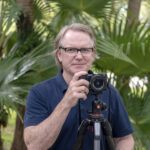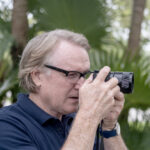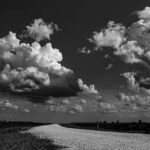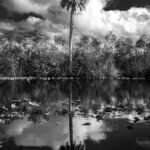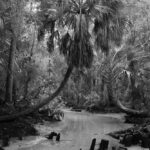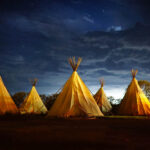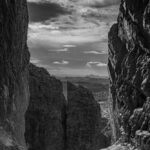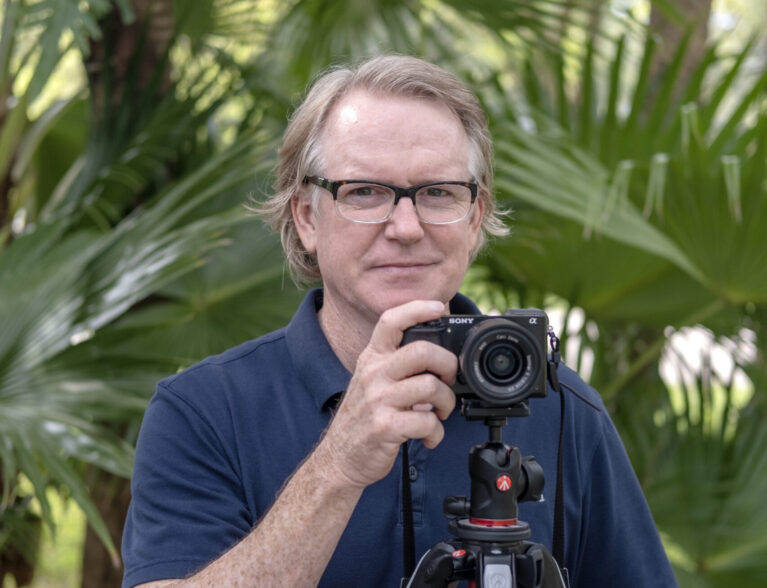
As a native Floridian growing up in Dade City, photographer Matt Erpenbeck spent much of his childhood in the great outdoors, fishing, hunting, camping and enjoying nature. While he loved the wondrous beauty of the woods, swamps and hidden springs, he says he really never thought about the possibility that they might actually disappear within his lifetime.
“I lived and played among the great landscapes in Florida but took them for granted when I was younger,” says Erpenbeck, contemplatively.
“Now with Florida’s population explosion, some of my favorite playgrounds are gone, only to be replaced with new housing developments. I guess the main reason I choose to photograph landscapes is to capture their image before it’s too late.”
Erpenbeck also lived in Fort Myers for a while and had the pleasure of meeting famed landscape photographer Clyde Butcher. It was during a visit to Butcher’s Big Cypress Gallery that the photo bug truly took hold.
“Meeting Clyde Butcher was very inspirational. I was fascinated not only by his compositions and subjects, but also by his process of printing massive photographs,” Erpenbeck says.
“You never see a man-made object in Butcher’s photos, primarily because he’s sitting out in a swamp where nothing else exists. His work made me look at things differently and made me realize that nearly every inch of this state has been touched by man. I was witnessing environmental degradation and I wanted to photograph places before they changed.”
Erpenbeck was also intrigued with Butcher’s preferred choice of black and white over color photography.
“Black and white is traditional, and with the absence of color it becomes all about contrast and shading. The sky is flat, but it has the contrast of clouds. The shadows change with the sun. Butcher knew this and would wait all day for just the right lighting,” he explains.
“I look at photography differently than I did 20 years ago. Back then I’d say it was a cool photo. Now I dive deeper into the photo to understand how it was created. I watch people look at photography in galleries and, while they are attracted to a colorful sunrise, they tend to spend more time studying the black and white photos.”
Erpenbeck moved to Vero Beach 13 years ago to follow a career in the citrus industry. As the orange and grapefruit groves were cleared more and more for housing, he worked in insurance. Now, he is focused on fine-tuning his photography skills with the hopes of making it his primary profession.
“I guess you could call me an up-and-coming artist,” he says with a chuckle.
“There is a vibrant art community in this town, and I was lucky to take photography classes at the Vero Beach Museum of Art and Indian River State College,” he says.
Erpenbeck has entered local juried exhibitions and feels honored to have been selected by many galleries to have his work shown. Among them, his work has been featured at the Environmental Learning Center, and was selected for several of the A.E. Backus Museum and Gallery’s juried ‘Through the Eye of the Camera exhibitions.
His black and white photograph “South by Southeast” is currently on display at the ‘Treasure Coast Creates: A Tribute to Local Artists’ exhibition at the Vero Beach Museum of Art, and he has two pieces at a gallery in San Marcos, Texas. He has also shown at the Palm Beach Photographic Center and captured Second Place in the Florida Wildlife Federation annual photo contest.
Erpenbeck prefers to shoot with a Sony A6000 mirrorless camera with a wide-angle 24mm lens.
“Having a good lens is really important in landscape photography,” he explains.
“They say you date a camera and marry a lens. Of course, that lens is only good for landscapes and if I want to zoom in on anything I have to swim or walk or crawl. I always use a tripod too, because I want to eliminate any shake and keep my photos crisp and sharp.”
Nearly all of Erpenbeck’s photos have been taken in either his home state of Florida or his wife’s home state of Texas.
“I’m in Texas several times a year and, while the two states are different, both have somewhat desolate environments that make for beautiful landscapes.”
Aside from nature, Erpenbeck says he gets inspiration from other artists’ paintings. He has followed the Highwaymen artists on their journey to greatness and is still in awe of the ability of A.E. Backus, who could capture Florida sunsets like no other.
“I go to museums and exhibitions, and I see things that I may not be interested in, but I still have an appreciation for the effort and skill, even if it’s not my thing,” he confides.
“I’m open to all types of art, from abstract to portraits, and I can learn from studying the artists’ techniques.”
Erpenbeck has even tackled the difficult art of astrophotography.
“I’ve done some photos of the Milky Way and it’s all about understanding how your camera works relative to your lens. There’s a mathematical formula that calculates how long to expose a photo,” he explains.
“The trick taking good photos anywhere and anytime is to be patient and take a lot of photos. You never know when the perfect one shows up.”
His recent awards include Third Place and Award of Merit, Flora & Landscape Category in the A.E. Backus Museum’s ‘Through the Eye of the Camera’ juried exhibition in 2023, and Best Black and White Photography at the 2022 Backus exhibition. He also received Best of Show at the 2023 Environmental Learning Center’s Spring Fling Art Show.
Photos by Joshua Kodis
- Matt Erpenbeck

